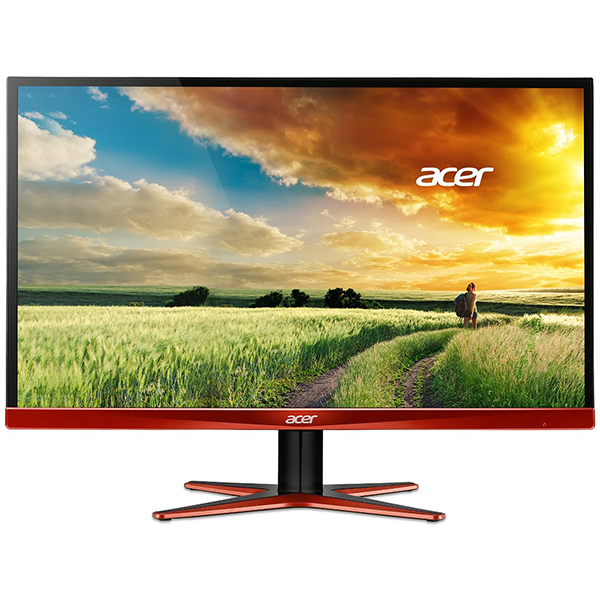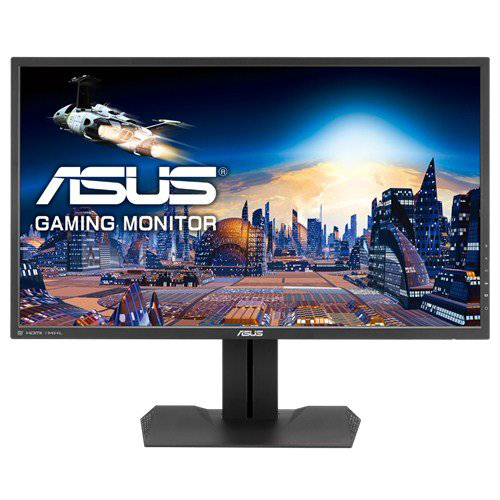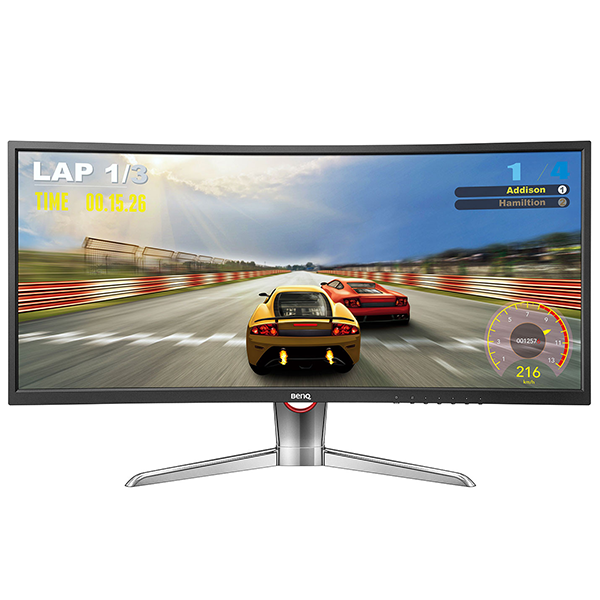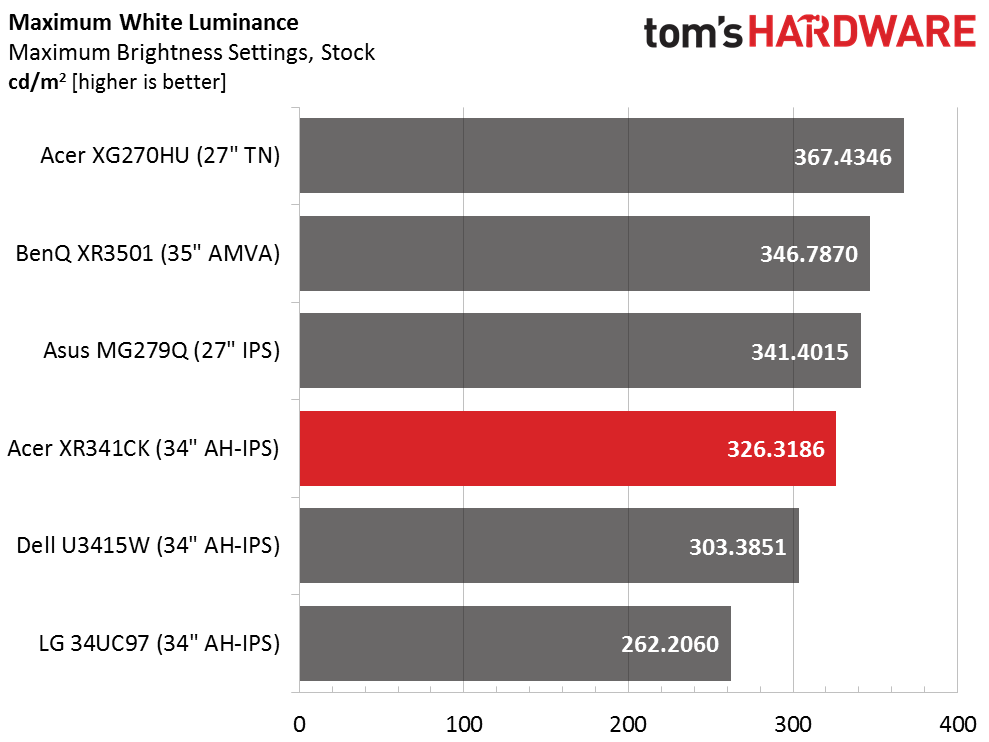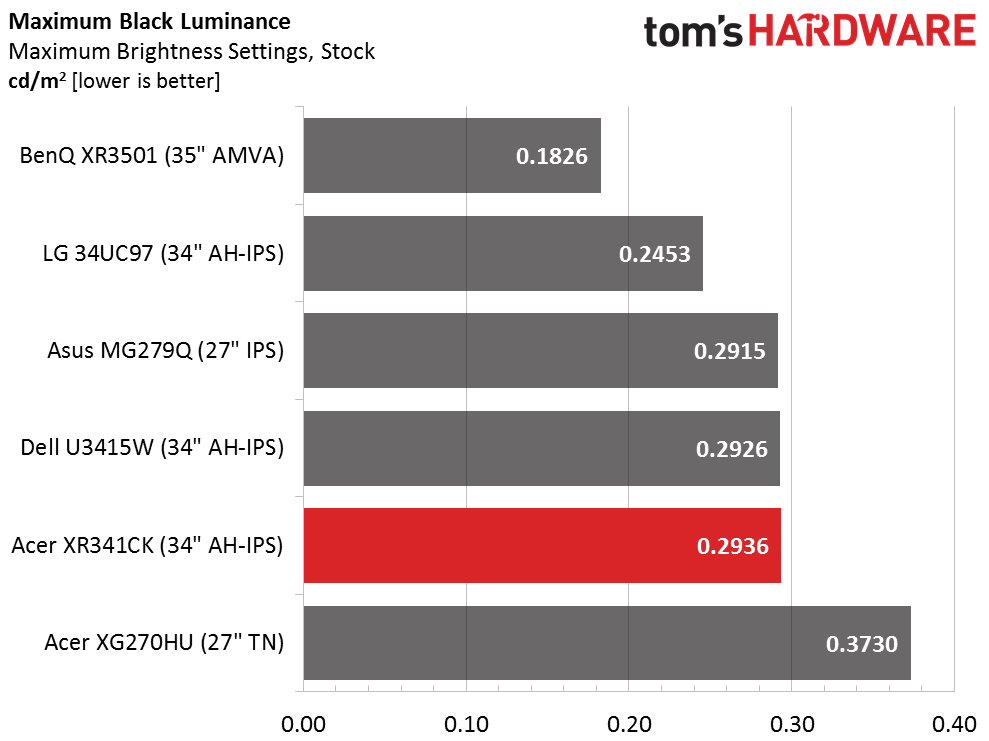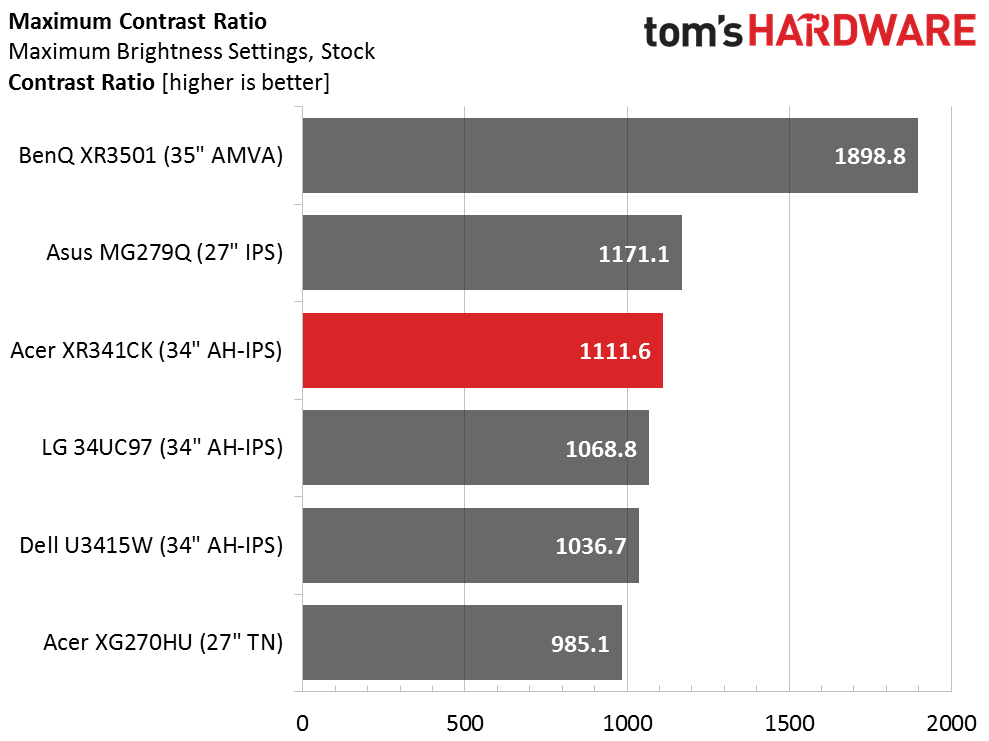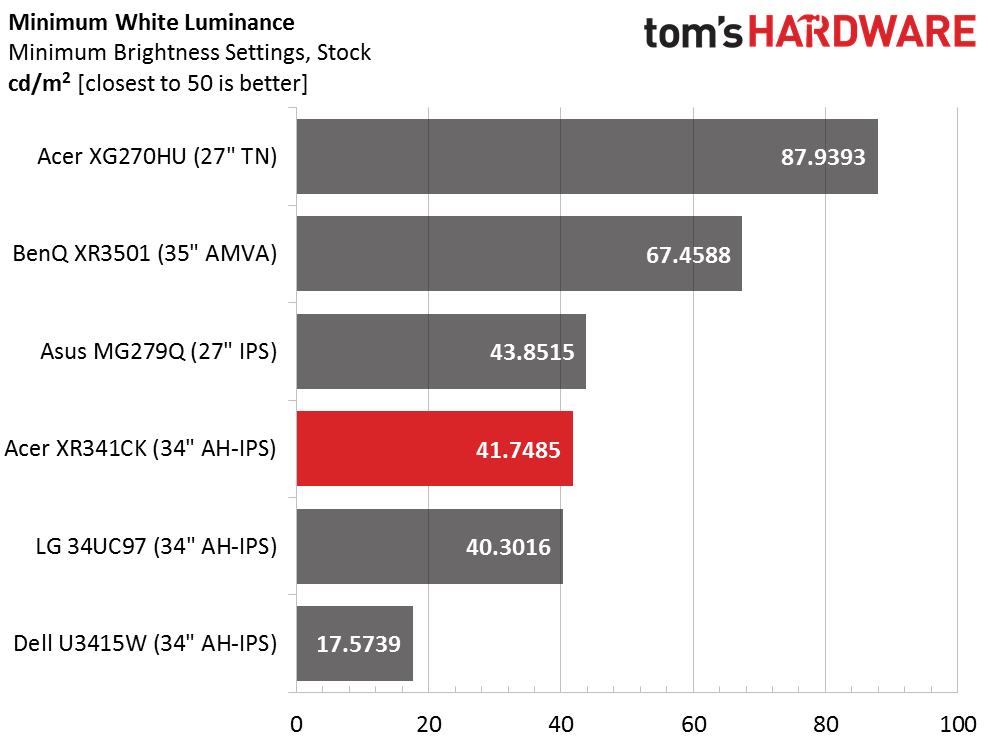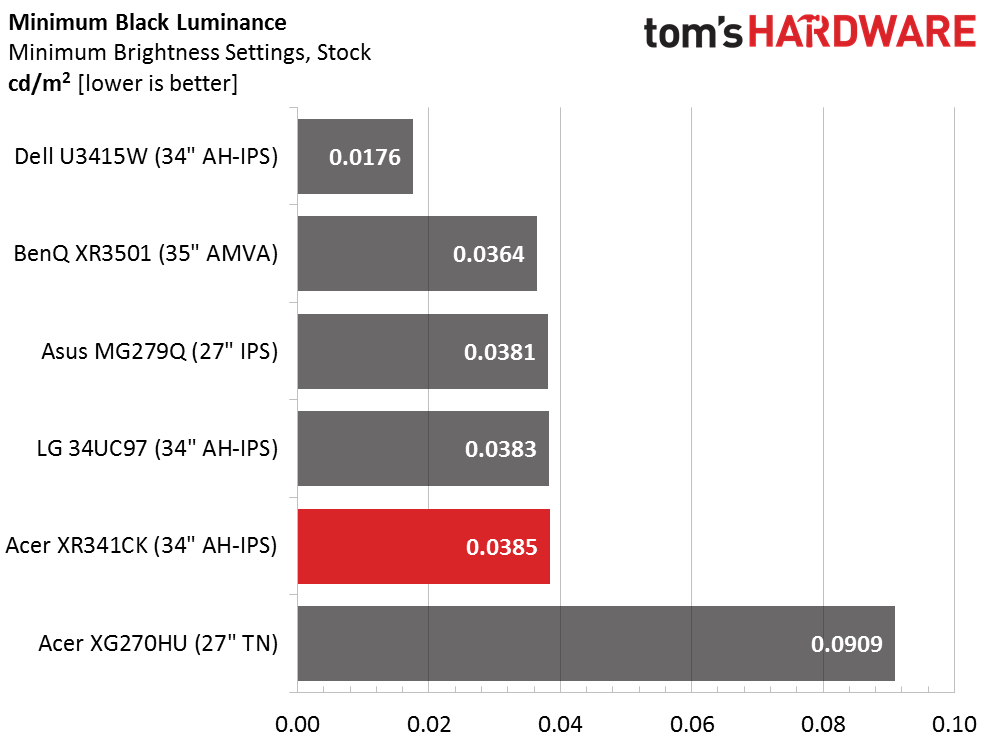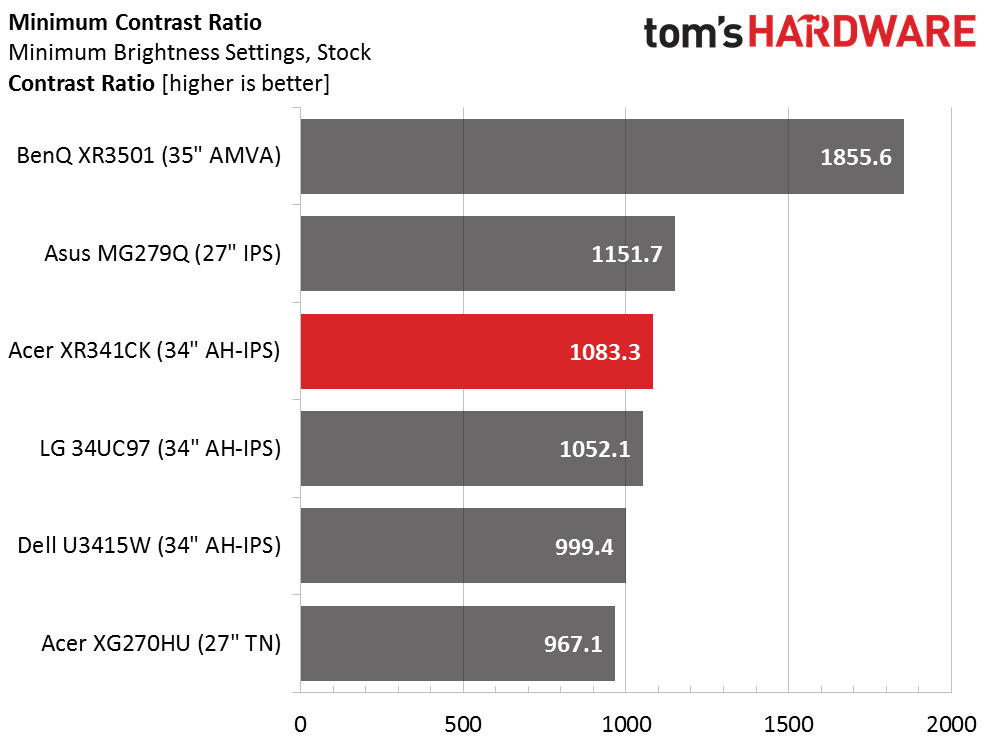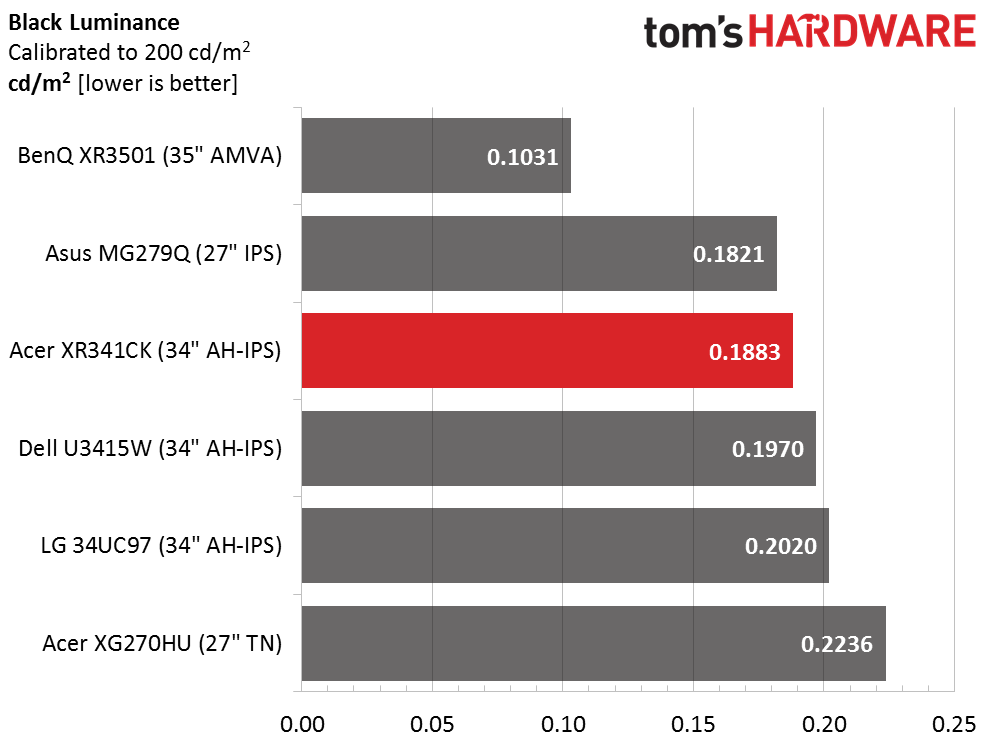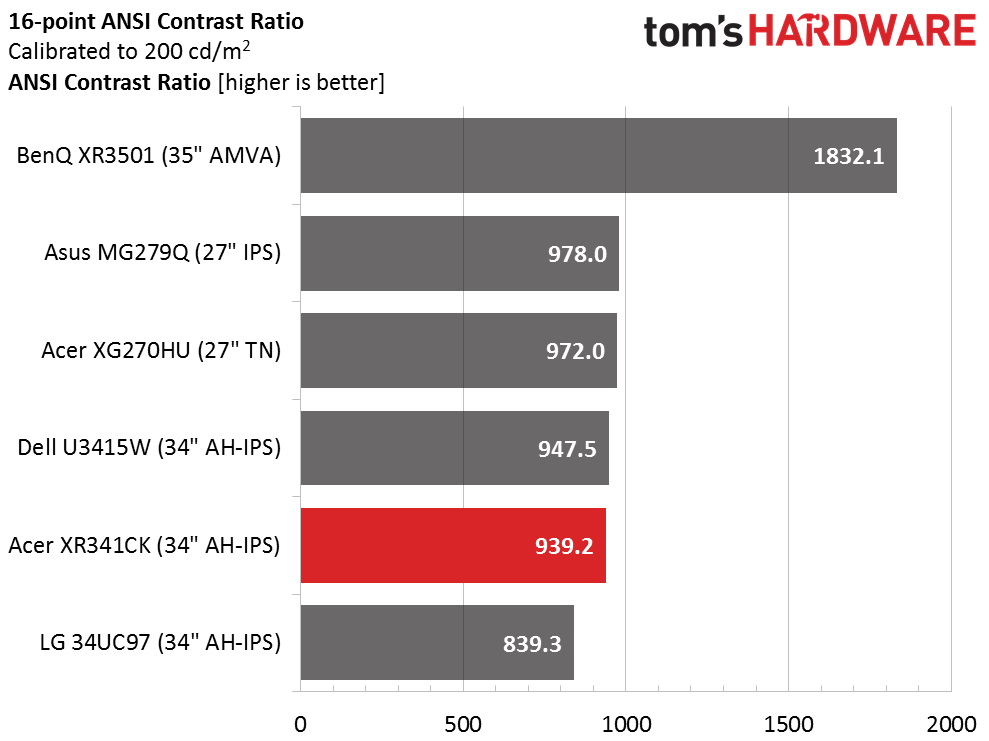Acer XR341CK 34-Inch Curved FreeSync Monitor Review
Acer offers its latest curved monitor, the XR341CK 34-inch WQHD, which should appeal to gamers with its 75Hz IPS panel and FreeSync. Today we check it out.
Why you can trust Tom's Hardware
Brightness And Contrast
To read about our monitor tests in-depth, please check out Display Testing Explained: How We Test Monitors and TVs. Brightness and Contrast testing is covered on page two.
Uncalibrated – Maximum Backlight Level
We rounded up all the latest ultra-wide and curved monitors in our database for today's comparison. BenQ is represented by the XR3501 and from Dell we have the U3415W, which is more of a professional tool than a gaming monitor. LG's 34UC97 is a business-class screen but since the XR341CK adds only FreeSync and an extra 15Hz, we think it's relevant. To fill out the group, we're including two more FreeSync displays -- Acer's XG270HU and Asus' MG279Q.
Acer rates the XR341CK at 300cd/m2 but we saw over 326cd/m2 on our sample. That's enough to offset the output loss caused by ULMB -- if that feature were included. So far it seems to be missing on all FreeSync displays.
The lone TN screen here loses ground in the black level contest mainly thanks to its brighter backlight. The BenQ takes the top spot with its superb AMVA panel. Hopefully we'll see both that and frame-rate matching on a product in the near future.
While the BenQ monitor is far ahead of the pack in max contrast, the XR341CK acquits itself well with a ratio of 1111.6 to 1. This is higher than almost any IPS screen we've tested. We still maintain that contrast is the most important element of image quality. That belief is confirmed by the superb picture coming from this Acer unit.
Uncalibrated – Minimum Backlight Level
Turning down the backlight to minimum yields a just-useable 41.7485cd/m2. With all the lights off, gaming becomes very immersive. If you want to turn up the brightness just a little, three clicks will result in exactly 50cd/m2.
The XG270HU and U3415W represent two extremes while the rest of the pack displays nearly identical minimum black levels. The Dell's result is thanks to its very dim backlight and the XG's is due to a very bright one. All of these screens will produce sufficiently deep blacks for gaming or anything else you want to do.
Get Tom's Hardware's best news and in-depth reviews, straight to your inbox.
Minimum contrast remains stable at 1083.1 to 1; just a tad under the max number. We almost never see a monitor with inconsistent contrast anymore and that's as it should be. Since the XR341CK is so accurate, you can just set the brightness where you want it and enjoy around 1100:1 contrast and accurate color, it's that easy.
After Calibration to 200cd/m2
Calibration moves the XR341CK up a bit in the rankings. It won't be mistaken for an AMVA panel but .1883cd/m2 is a great result nonetheless.
Contrast is only a tiny bit lower after calibration, mainly because we dropped the Contrast slider for better grayscale accuracy. It's a nit-pick though; no adjustments are actually necessary for optimal image quality.
ANSI Contrast Ratio
Since ANSI contrast is affected by screen uniformity, we saw an 11 percent drop thanks to slight hotspots in the screen's corners. They aren't visible to the naked eye, but our instruments could see them. Other XR341CK samples could measure slightly better or worse than our result.
Current page: Brightness And Contrast
Prev Page OSD Setup And Calibration Next Page Grayscale Tracking And Gamma Response
Christian Eberle is a Contributing Editor for Tom's Hardware US. He's a veteran reviewer of A/V equipment, specializing in monitors. Christian began his obsession with tech when he built his first PC in 1991, a 286 running DOS 3.0 at a blazing 12MHz. In 2006, he undertook training from the Imaging Science Foundation in video calibration and testing and thus started a passion for precise imaging that persists to this day. He is also a professional musician with a degree from the New England Conservatory as a classical bassoonist which he used to good effect as a performer with the West Point Army Band from 1987 to 2013. He enjoys watching movies and listening to high-end audio in his custom-built home theater and can be seen riding trails near his home on a race-ready ICE VTX recumbent trike. Christian enjoys the endless summer in Florida where he lives with his wife and Chihuahua and plays with orchestras around the state.
-
ohim Why do they make screens brighter than 300 or let`s say max 350 cd/m² ? I had tested a Iiyama 27" with 350 and at max brightness i could feel the heat from the screen on my hands and face at 30 cm away from the screen ... you can`t even use the blessed thing at max.. i finally settled for around 20-30% of screen brightness max 50% for presentation purposes ...Reply -
rene13cross Better the screen is too bright and brightness can be reduced than it being too dark and brightness cannot be increased. Nothing to complain about in my opinion.Reply -
DoDidDont Seriously considering two of these for work/play, but holding off as the Asus ROG PG384Q 34" curved monitor looks more promising, G-sync, IPS, and 3440x1440 @ 100Hz. All come down to when Asus will release it, and how long I can wait...Reply -
Au_equus acer also has a g-sync model (XR341CKA aka Predator X34), but, like asus, there seems to be a never ending delay after delay.Reply -
Larry Litmanen I saw a similar monitor in the store recently and i have to say yes it is wide, but in height the display is too short, they need to add a few more inches to height so the experience is very immersive.Reply -
PlanesFly Great Review guys. Just one thing, you need to remove the reference to being a Predator monitor, this monitor has absolutely no tie to the Predator line-up of products, it is a XR Series monitor. Only the G-Sync version falls under the Predator series.Reply -
cknobman $1000? LOL No. They have already proven in the TV market that this curved crap adds nothing to the experience, and even detracts from it. It is not worth any type of premium whatsoever.Reply
$500, Yes -
PlanesFly Reply16681781 said:I saw a similar monitor in the store recently and i have to say yes it is wide, but in height the display is too short, they need to add a few more inches to height so the experience is very immersive.
You can't just add to the height or the aspect ratio wouldn't be 21:9. The height is equal to a 27" 16:9 monitor with 30% more width.
You're looking for a monitor with 3820x1600, essentially a 4k monitor with the vertical chopped off. -
obababoy ReplySeriously considering two of these for work/play, but holding off as the Asus ROG PG384Q 34" curved monitor looks more promising, G-sync, IPS, and 3440x1440 @ 100Hz. All come down to when Asus will release it, and how long I can wait...
What GPU are you running? if you have AMD get this, if you have Nvidia get the ROG...but wait for however long it will take. -
PlanesFly Reply16681911 said:Seriously considering two of these for work/play, but holding off as the Asus ROG PG384Q 34" curved monitor looks more promising, G-sync, IPS, and 3440x1440 @ 100Hz. All come down to when Asus will release it, and how long I can wait...
What GPU are you running? if you have AMD get this, if you have Nvidia get the ROG...but wait for however long it will take.
Why should someone wait for the ROG, they will be using the exact same panel and the Acer X34 has already passed both reviews I've seen so far with flying colors. The only difference is if you desperately want the slightly different aesthetic of the ASUS version over the Predator.
The X34 should be out in a couple weeks...the ASUS won't be out until possibly Jan 2016.
